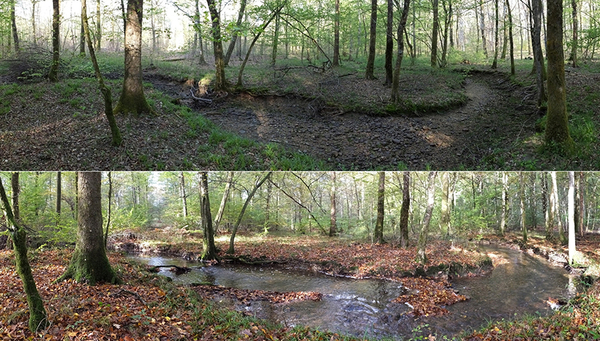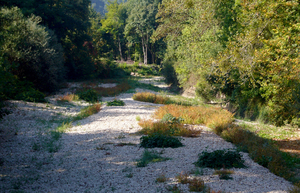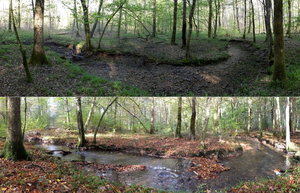News Detail
Large quantities of CO2 from intermittent rivers
June 5, 2018 |
Leaf litter, branches and other plant matter from the surrounding land collect in dry riverbeds – in varying quantities and composition depending on the climate, vegetation and duration of the dry period. When the water begins to flow again, microorganisms become active and break down the organic matter. This process has been quantified in large-scale studies for the first time by researchers from all over the world: in 212 rivers in 22 countries they analysed the quantities of biomass and its composition deposited in riverbeds during the dry periods. In the laboratory, investigators looked into how quickly the leaves in this biomass break down when they are subject to rewetting. It was found that the microbes are active within the first 24 hours and CO2 emissions increase rapidly.
Using mathematical models, the researchers were able to show that CO2 production from river networks is between 7% and 152% higher when intermittently dry sections are included. One single flooding can account for up to 10% of this increase. An especially large quantity of CO2 is released in regions with moderate climates, because far more leaves collect in such areas than in tropical or arid zones.
The study, which was published in the renowned professional journal Nature Geoscience, makes it clear that greater attention should be paid to stop-and-go rivers as part of the global CO2 cycle. This will have increasing relevance going forward, as even more river courses intermittently dry up as a result of climate change.
Original article
T. Datry et al., A global analysis of terrestrial plant litter dynamics in non-perennial waterways; Nature Geoscience (2018); https://dx.doi.org/10.1038/s41561-018-0134-4
Photos
Dry riverbed of the Albarine (FR); around half the world’s river networks carry water only intermittently.
(IRSTEA)



